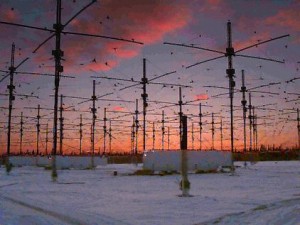From Iron Man to Halo, powered armor is a common sight in media. But how common will it be in real life? Our group aims to figure that out. We will look at current research into powered armor, media portrayals, and the technology needed to make it work. This includes power sources, materials, control mechanisms, and mobility.
Absorbance spectra of varied alcoholic beverages: A spectrophotometric study
Spectrophotometric analysis displays the variable wavelength absorbances of compounds in solution; here, we apply this powerful analytic tool to a variety of alcoholic beverages in order to determine their unique absorptive spectra. These spectra will reveal similarities and differences in the compounds which give each beverage its characteristic color, as well as the wavelengths which are most efficiently absorbed by the beverage. We present, in song, the results of this analysis, as well as the physical principles which are utilized in spectrophotometry.
Modern Technology Misconceptions Mythbusted
For our creative project, we wish to expose and/or test (when possible) common misconceptions about modern technologies, such as: cell phones, power lines, nuclear power, wind power, solar energy, lasers, microwaves, laptop computers, mp3 players, etc. As an additional part of our project, we will conduct video interviews with other Vassar students to see what ideas they have about these myths. An example of one of the questions we hope to answer could be: Do microwaves leak unsafe levels of electromagnetic radiation?
Group 9 Project
Each of the three of us (Adam, Andrew, and Max) will pick one video from youtube of some sort of scientific procedure that looks like it might not work and test it ourselves. An example would be testing the popcorn/cell phone myth that we saw in class. We will videotape our own experiments and put together a short movie.
A Look Into the Structure and Creation of Holograms

A Famous Hologram
From our ID’s and credit cards to old software packaging, holograms are seen everywhere in our day to day lives. Though these little three dimensional images are everywhere, the average American does not understand how they are made. Our group will investigate the structural design of holograms and how implemented with lasers can create three dimensional images. We will use the holography kit to build our own holograms and through their construction get a better understanding of how they work.
Magnetic Data Storage: Exploring the mechanisms behind magstripes

Faraday's Law
In our project, we will explain the mechanism behind magstripes, or magnetic card stripes. We will explain the process of swiping a card, thereby storing and receiving data, with the principles of Faraday’s Law (which explains how induced EMF’s [aka voltage] result from varying magnetic fields, magnetic flux, and induced currents). Our project will primarily be theoretical, but we will also delve into the experimental by measuring the maximum and minimum velocities accepted by card readers around Vassar’s campus.

The Energy Battle Royal: Apple Versus…Well…Everyone Else.
Apple has made a name for itself by introducing energy saving technologies, such as their lithium-polymer battery and A5 chip, with the promise that these devices will give us the ability to use laptops and tablets for an extended amount of time without needing an outside power source, putting other laptop brands to shame. This experimental project aims to investigate whether these claims are accurate. Using the WattsUp Pro, we compare power usage from Apple products and their competitors, including personal computers, Droid mobile phones, Blackberries, and netbooks. We expect that Apple products will generally use less energy than their rivaling products.
The Physics of Photovoltaics: Project Abstract
We plan to investigate the physics of solar panels, focusing especially on the manner by which they are produced, the materials necessary to create a photovoltaic cell, and the process by which these cells convert light to energy. Also considered will be their efficiency, and their efficacy as a long-term “green” energy solution to help lower the world’s dependence on fossil fuels. Are they really cost effective and beneficial to the environment? Our approach will be mostly theoretical, with the possibility of gathering our own data on the amount of energy these cells are capable of producing with a small number of photovoltaic cells. For our presentation, we plan to demonstrate our results and explore the issue in a PowerPoint slide show.
Holographic Data Storage
Our group will be exploring the usage of holographic data storage as the successor to current methods of data storage on the market. We will research the underlying mechanisms behind holography and find out the plausibility of its mass production for the general public. We will explore the incorporation of holographic data storage into current and ever-improving consumer and industrial products. We will also explore current efforts by the military to incorporate holographic data storage with cloud computing.
The HAARP Ionospheric Research Facility
HAARP (High Frequency Active Auroral Research Program) is a world-class ionospheric research facility that is dedicated to researching the physical and electrical properties of the Earth’s ionosphere. HAARP experiments involve high energy, high frequency radio transmitters used to stimulate small, well-defined volumes of ionosphere. These investigations focus on studying the properties and behavior of ionospheric plasma, which can lead to improved communications, navigation, and surveillance systems for both civilian and military use.
For our project, we would like to research results put out by the facility and physics of the electromagnetic waves that HAARP produce and the relationship between the ionosphere and Earth. We will investigate the conspiracy theories that suggest HAARP is being used by the Department of Defense to control the weather, and we will include home-made multimedia demonstrations of the effects of the high frequency waves and atmospheric plasma.


